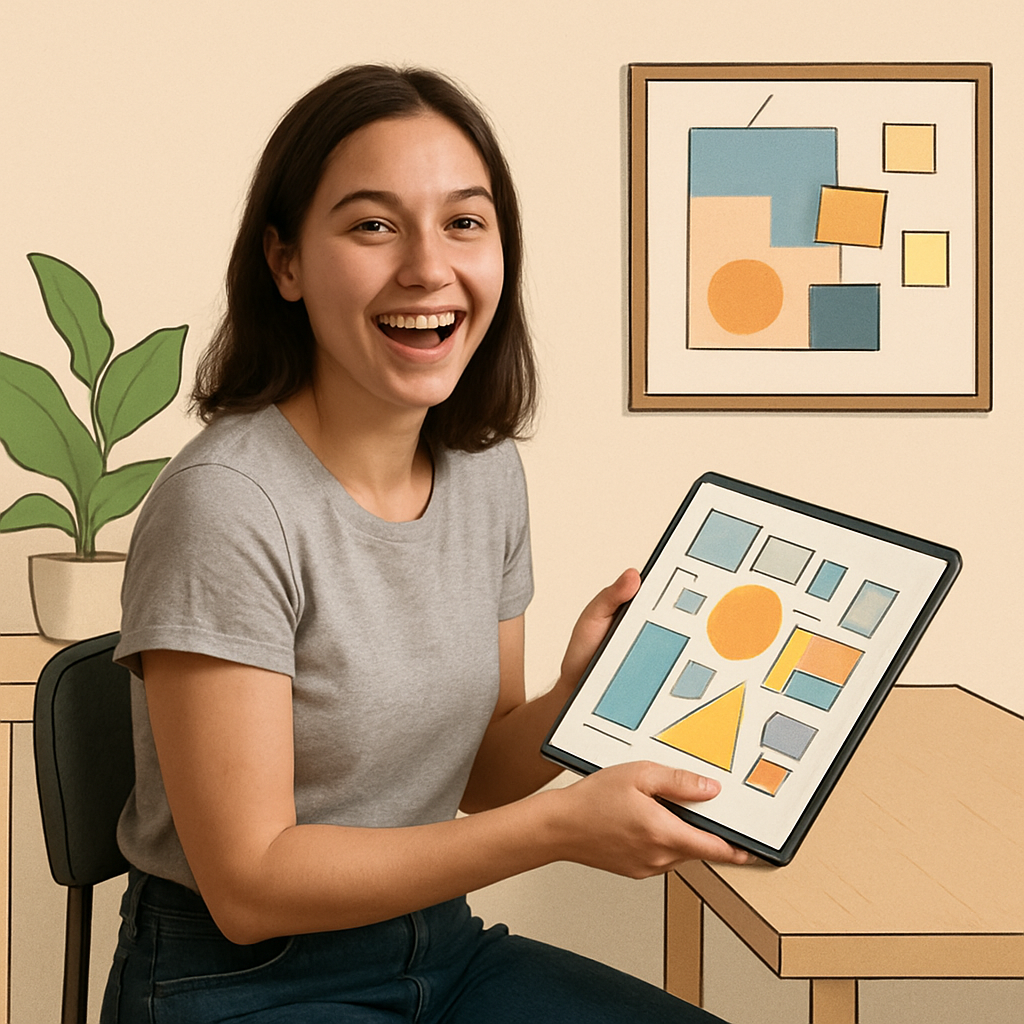AI-Powered Mood Boards & Concept Generation
Struggling to bridge the gap between your client’s design brief and a tangible, inspiring mood board? Many designers grapple with distilling vague instructions, limited references, and brand constraints into clear creative direction. This guide was built with those pain points in mind. Here, you’ll find a streamlined workflow that leverages AI to turn any design brief into actionable visual concepts, saving you hours of manual brainstorming and organization. Follow this step-by-step process to ensure every project starts with a mood board that’s both strategic and visually compelling, getting you—and your client—excited for what comes next.

Important Considerations
Ensure you maintain quality and compliance throughout the process by observing these key notes.
- Always respect copyright and usage rights when selecting images/references.
- Double-check all brand constraints for compliance before finalizing your mood board.
- Sensitive client information should never be uploaded to public AI tools unless explicitly allowed.
- Keep clear version histories when sharing drafts with clients or team members.
- Be mindful of potential AI hallucinations or irrelevant outputs; review all results carefully.
Minutes Saved
Every Time Used
Minutes To Set Up
Workflow Guide For
AI-Powered Mood Boards & Concept Generation
Setting Up for Success
Before you begin, make sure you have all the necessary inputs and resources for a smooth workflow.
- Complete client design brief with goals, constraints, and references
- Access to a reliable AI chatbot (such as ChatGPT or similar)
- Your preferred visual design tool (Figma, Milanote, Adobe Illustrator, etc.)
- Lists of relevant keywords, color palettes, or artists (optional but helpful)
- Clear understanding of brand guidelines
Important Considerations
Ensure you maintain quality and compliance throughout the process by observing these key notes.
- Always respect copyright and usage rights when selecting images/references.
- Double-check all brand constraints for compliance before finalizing your mood board.
- Sensitive client information should never be uploaded to public AI tools unless explicitly allowed.
- Keep clear version histories when sharing drafts with clients or team members.
- Be mindful of potential AI hallucinations or irrelevant outputs; review all results carefully.
Follow these steps to streamline your workflow and enhance operational efficiency in your role.
Start Here
Step 1: Gather and Organize the Design Brief
"I have a new client design project. Here’s the full design brief (client background, goals, target audience, desired mood, visual references, brand constraints, etc.). Summarize this brief and identify the most important visual and conceptual themes to guide mood board generation."
Goal
To distill and clarify the essential components of the design brief so the AI will understand the context and key themes for brainstorming.
Example
"Here's my design brief: [pastes client info, goals, sample references, and guidelines]. Please extract main visual and emotional directions for this project."
Variations
- "Summarize the most important constraints and inspirations from this design brief for creating initial concepts."
- "List key adjectives and visual motifs from the following brief to serve as brainstorming seeds."
Troubleshooting
- Brief is too long or messy: Ask the AI to focus on only the most critical points (brand colors, style, feelings, etc.).
- Missing information: Clarify with your client or add notes directly before pasting into the AI prompt.
Step 2
Step 2: Request AI Generation of Mood Board Inspirations
"Using the summarized themes and project goals above, generate a list of specific visual inspiration prompts for a mood board. Please specify style, mood, colors, and potential reference sources."
Goal
To get tailored, actionable inspiration prompts and visual directions to begin assembling a mood board.
Example
"Based on the summary you provided, generate 6 mood board prompts describing possible directions (e.g., 'Minimalist Scandinavian workspace in neutral tones')."
Variations
- "Suggest reference search terms or artists/styles for each key theme from the brief."
- "List 5 distinct color palettes fitting the design brief's values and target audience."
- "Propose image search queries for stock sites based on the brief."
Troubleshooting
- Inspirations feel generic: Refine the brief and request more unique or specific directions.
- Doesn't respect project constraints: Remind AI to adhere strictly to brand rules or required elements.
Step 3
Step 3: Refine and Visualize Mood Board Concepts
"Select 2-3 of the AI's proposed mood board directions and ask the chatbot to expand them into detailed visual descriptions, including suggested image types, compositions, colors, and typographic styles."
Goal
To create fleshed-out creative directions, making it easier to search for, select, or create actual images and materials for the mood board.
Example
"Expand on 'Elegant monochrome event flyer'—describe key images, textures, and typographic styles that would suit this mood board direction."
Variations
- "For the bold retro direction, recommend stock photo search keywords and three color swatches."
- "Describe a potential layout for the 'modern eco-friendly' mood board."
Troubleshooting
- Visuals still too abstract: Ask for concrete image types, artists, or stock resource suggestions.
- Too many/too few ideas: Request a specific number or ask AI to rank concepts by suitability.
Step 4
Step 4: Export or Apply AI Ideas to Visual Tools
"Summarize the final mood board concepts in bullet points or lists that I can copy into Figma, Milanote, or Adobe Illustrator for quick assembly. Optionally, suggest references for images or links to similar mood boards online."
Goal
To seamlessly transfer the AI-generated ideas into your design platform of choice for actual creation or client presentation.
Example
"List the main themes, palettes, and sample visual references from these three directions so I can quickly assemble my Figma mood board."
Variations
- "Provide URLs to stock photo collections or mood board layout templates that match these concepts."
- "Export a summary list I can use for asset collection in Milanote."
Troubleshooting
- Can’t copy-paste results effectively: Ask for a clearly formatted text list or CSV.
- References too vague or unavailable: Request alternatives or more concrete examples by niche or subject.
Step 5
Step 6
Step 7
What You'll Achieve
By completing this workflow, you’ll have a mood board that thoroughly aligns with your client’s brand, project goals, and desired style. You’ll be equipped with actionable creative directions, visual references, and organized ideas that both inspire and inform the next phases of your project—setting a solid foundation for design success and client satisfaction.
Measuring Your Success
Track your progress by monitoring the effectiveness of your mood board process and the quality of your design outcomes. Success can be measured by the clarity of your creative direction, efficiency gains, and client satisfaction.
- Time taken from brief to completed mood board
- Client approval rate of initial concepts
- Number of revisions required
- Alignment of final designs with client vision
- Reduction in misunderstandings or missed constraints
Troubleshooting Your Workflow
Navigating workflow challenges can be daunting. This guide offers practical troubleshooting tips and innovative strategies to enhance your AI implementation.
Pro Tips & Tricks
- Use specific adjectives and brand values in your prompts for ultra-tailored results.
- Ask AI to suggest image search queries for real-world asset gathering.
- Save recurring brief summaries or prompt templates for future projects.
- Request multiple variations from AI to compare creative directions side-by-side.
- Utilize AI to summarize constraints separately from inspirations for clarity.
- Leverage visual search tools in Figma or Milanote for quick asset placement.
- Share draft mood boards early with clients for feedback before full assembly.
Common Issues & Solutions
Even with a clear workflow, you may encounter some challenges. Here’s how to resolve them:
- Issue: AI outputs generic or unrelated inspirations.
Solution: Refine prompts with more detail and reiterate key constraints. - Issue: Brand requirements are missed.
Solution: List brand guidelines as bullet points in every AI prompt. - Issue: Client feedback indicates the mood board is ‘off target.’
Solution: Revisit the brief summary to check for missing or misunderstood points, then re-prompt. - Issue: Difficulty exporting ideas into design software.
Solution: Ask AI for ready-to-paste lists or CSV-formatted outputs. - Issue: Lack of inspiration even after AI prompts.
Solution: Seek external references from curated design sites and feed key phrases back into AI.
Best Practices to Follow
- Ensure every visual element ties directly to the project’s goals and audience.
- Document rationale behind each mood board choice for easy client review.
- Follow strict copyright and brand compliance on all assets.
- Iterate with feedback loops, not just one-off generation.
- Regularly update your workflow templates as AI or design tools evolve.
- Archive completed briefs and boards for future learning/reference.
- Train your team on prompt engineering for consistent results.
- Test final boards for accessibility—color contrast, readability, etc.
Stay Inspired: Get More Workflow Guides
Ready to streamline your creative process and discover even more actionable guides like this? Sign up for our newsletter to receive the latest workflow tips, design resources, and exclusive industry insights straight to your inbox!

Streamline Your Daily Tasks
Discover AI solutions tailored for your role.
Multi-Modal Shipment Coordination Task
Simplify multi-modal shipments! Follow clear steps to organize, quote, and track carrier deliveries for seamless logistics. Save time now!
AI-Based Related Maintenance Suggestions
Streamline vehicle maintenance recommendations. Follow these clear steps to boost accuracy and customer trust while saving time.
Find Sheet Music & Exercises by Level & Goals
Discover how to efficiently find and assign tailored sheet music for your students. Streamline music selection with organized, actionable steps.
Stuck on a Tricky Implementation?
Let's Debug Together!
Book a 30-minute strategy session with our AI workflow wizards. We'll dive into your specific challenges, troubleshoot like pros, and map out optimization opportunities that'll make your workflows purr like a well-maintained server. No sales pitch, just solutions (and maybe a nerdy joke or two).

Explore More Guides to Enhance Your AI Implementation Journey

Discover Additional Resources Tailored for Your Industry Needs
These guides offer valuable insights and practical steps for effective AI integration.

Unlock the Potential of AI in Your Business Operations
Gain access to expert strategies and tools to streamline your processes.

Enhance Your Skills with Our Comprehensive AI Resource Guides
Find the right guide to elevate your understanding and application of AI.

